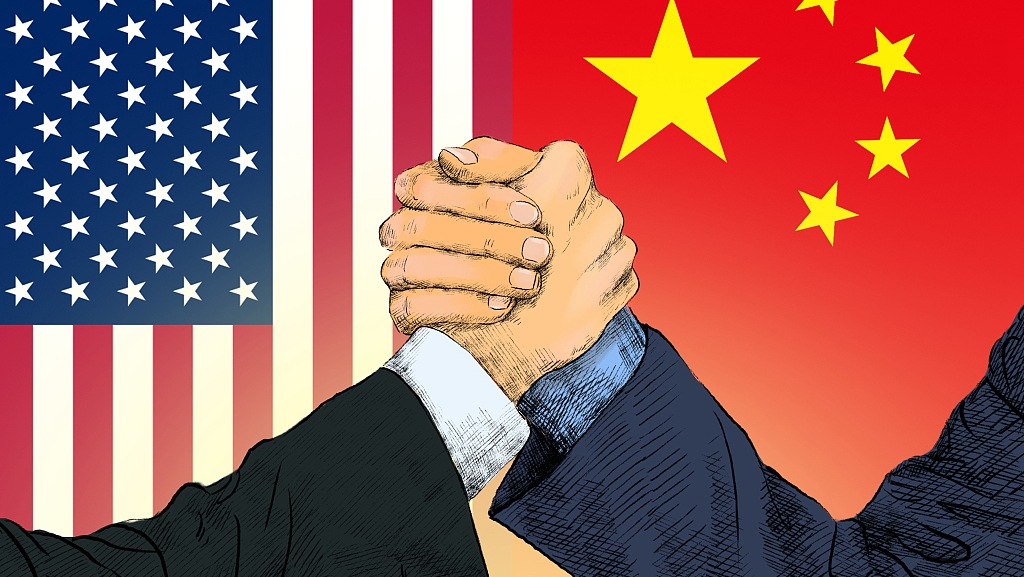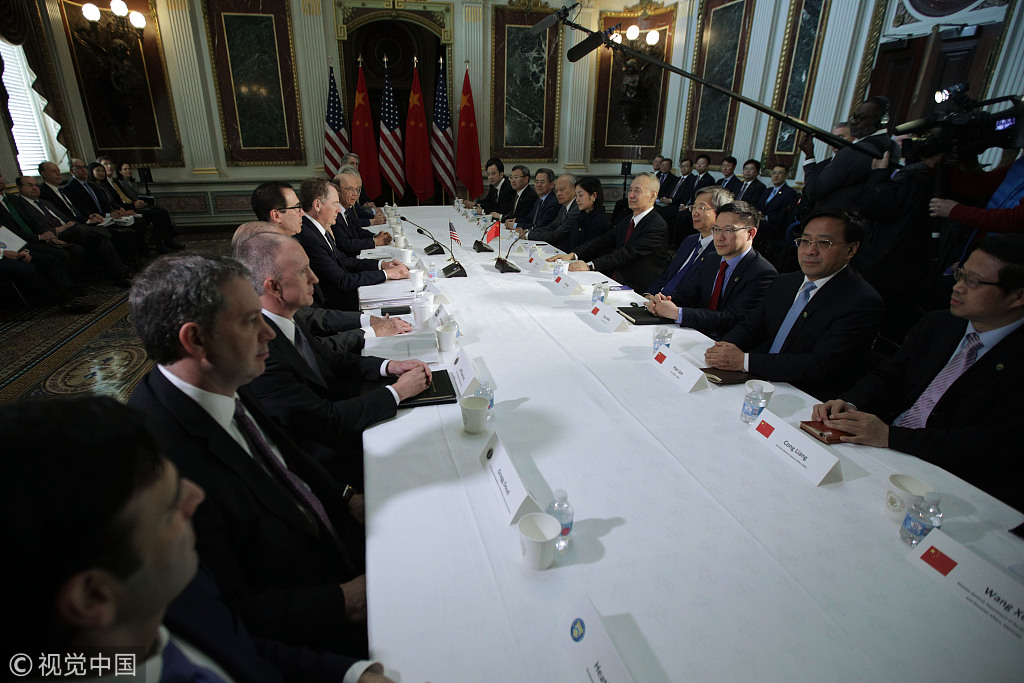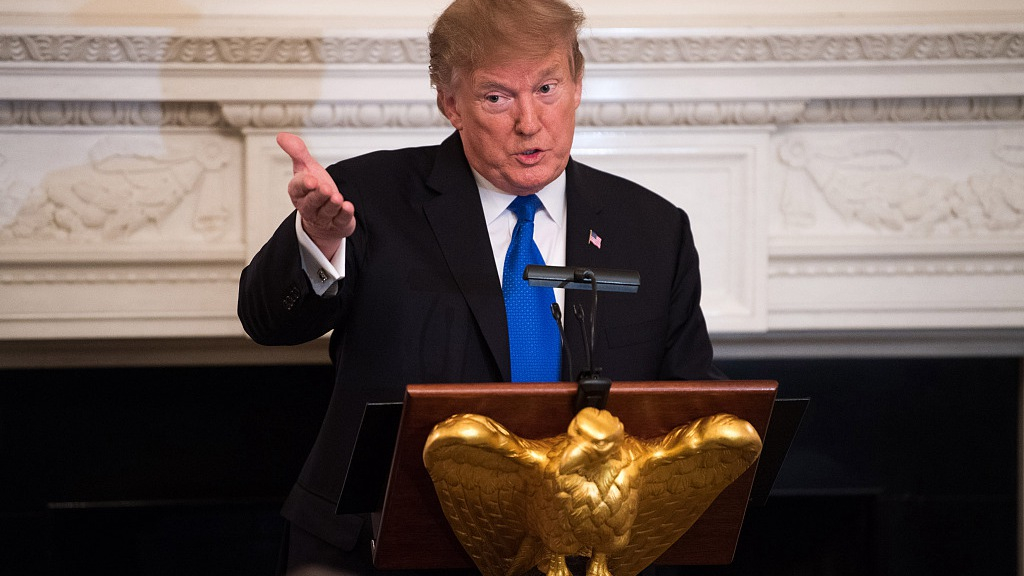
Opinion
09:33, 01-Apr-2019
Understanding the Chinese and American approaches to trade talks
Adam Garrie

Editor's note: Adam Garrie is director of the UK-based global policy and analysis think tank Eurasia Future and co-host of a talk show "The History Boys." The article reflects the author's opinion and not necessarily the views of CGTN.
As trade talks between Chinese and American representatives continue, it becomes ever more important to understand the distinctly different approaches taken by both countries. While in theory both the U.S. and China want to end the "trade war" with an agreement that is fair to both sides, the radically different mentalities of both nations help one to understand why the talks have gone on for so long without a resolution.
For China, there is nothing political about trade talks. The entire matter is one of pursuing open trading relationships with multiple partners on a win-win basis. In this sense, China's goals in respect of the U.S. are the same as China's goals more broadly. The only difference is that the U.S. is a major trading partner of China and is one that due to its geopolitical power, seems to revel in driving a hard bargain.
That being said, it is important to remember that before Donald Trump became president, China was laying the foundations from a pivot away from a mass production orientated economy to one based on the production of high-quality goods. The "Create in China" drive for innovation has likewise been a long term plan that will see China make substantial advances in the fields of science and technology, medical research, transport innovation, space travel, and 5G connectivity.

U.S. Secretary of the Treasury Steven Mnuchin, U.S. Trade Representative Robert Lighthizer and U.S. Secretary of Commerce Wilbur Ross participate in the U.S.-China trade talks with Chinese Vice Premier Liu He and other Chinese officials at the Eisenhower Executive Office Building in Washington, DC, February 21, 2019. /VCG Photo
U.S. Secretary of the Treasury Steven Mnuchin, U.S. Trade Representative Robert Lighthizer and U.S. Secretary of Commerce Wilbur Ross participate in the U.S.-China trade talks with Chinese Vice Premier Liu He and other Chinese officials at the Eisenhower Executive Office Building in Washington, DC, February 21, 2019. /VCG Photo
Today, as part of the overall push to create a moderately prosperous society in all respects, China is looking to attract more foreign imports than ever before whilst simultaneously developing fair, open and transparent trading agreements with multiple partners in both the developed and the developing world.
Taken in totality, there is nothing cunning or strategic about China's views on trade. China's views on trade are openly stated, transparent in their methods and logically self-evident in their foundations. As such, China wishes for the same spirit of openness with the U.S. as with smaller trading partners.
The U.S., however, takes a very different approach. This is especially true in the age of Donald Trump. Trump campaigned on a platform steeped in romanticism and emotion. He accused China and some other countries of causing the U.S. manufacturing sector to suffer and vowed to revitalize the industry.
The thinking, however, is rather naive. The fact of the matter is that the U.S. industrial decline began at a time when China's manufacturing sector was still virtually nonexistent and it happened for the following reasons.
First of all, the country began to overburden its manufacturers with illogical regulations beginning in the 1970s. For example, some ill-thought out environmental and industrial regulations almost crippled the U.S. automotive industry. All this happened at a time when the post Bretton Woods decline of the dollar's value led to a time of uncertainty among both consumers and producers.

U.S. President Donald J. Trump addresses a group of governors during the 2019 White House Business Session at the White House in Washington, D.C., February 25, 2019. /VCG Photo
U.S. President Donald J. Trump addresses a group of governors during the 2019 White House Business Session at the White House in Washington, D.C., February 25, 2019. /VCG Photo
As time moved to the 1980s, relations between the workforce and management became ever more hostile. Thus, instead of the government working harmoniously with workforce and industrial management to encourage innovation and healthy workplace relations, the opposite happened.
Government attacked business, businesses treated workers as though they were expendable and workers became disgruntled. All of this happened at a time when China was still an incredibly poor country and as such, China had no impact on these internal developments in the United States.
During the zenith of U.S. industrial decline, it was popular for U.S. politicians to blame post-war Japan and to a lesser extent post-war West Germany for America's woes. In respect of Japan, a lose-lose agreement called the Plaza Accord was signed in 1985 which forced a radical manipulation of major currency valuations.
This produced a Japanese asset bubble whose 1990 bursting resulted in decades of economic stagnation. Meanwhile, a weakened U.S. dollar continued to hurt American consumers and savers and all the while, the trade balance between Japan and the U.S. remained largely unchanged.
Although the Plaza Accord was a lose-lose situation, many in the U.S. still wish to force a similar agreement onto China, in spite of China's conservative monetary policies.
However, the U.S. remains the world's richest economy, the dollar remains a global reserve currency and the U.S. is still a military hegemon. This is why it is so untrue when Trump thinks his country is experiencing an age of humiliation and that it is largely caused by China.
Currently, the ninth round of China-U.S. trade talks is underway. In spite of Trump's romanticized approach to trade, China remains grounded in logical principles and will continue to pursue trade talks from this transparent and even-handed position. With this pragmatic approach, hopefully, the talk will deliver good results.
(If you want to contribute and have specific expertise, please contact us at opinions@cgtn.com.)

SITEMAP
Copyright © 2018 CGTN. Beijing ICP prepared NO.16065310-3
Copyright © 2018 CGTN. Beijing ICP prepared NO.16065310-3